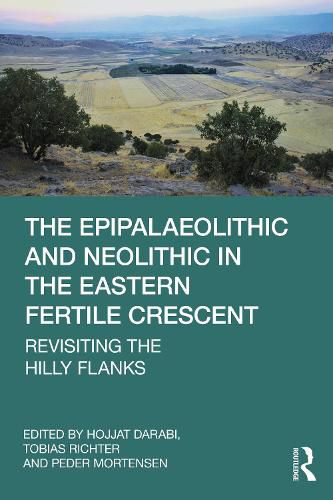Readings Newsletter
Become a Readings Member to make your shopping experience even easier.
Sign in or sign up for free!
You’re not far away from qualifying for FREE standard shipping within Australia
You’ve qualified for FREE standard shipping within Australia
The cart is loading…






This volume brings together the latest results from research carried out in the eastern Fertile Crescent and adjacent regions, as well as providing key historical perspectives on earlier fieldwork in the region.
The emergence of sedentary food producing societies in southwest Asia ca. 10,000 years ago has been a key research focus for archaeologists since the 1930’s. This book provides a balance to the weight of work undertaken in the western Fertile Crescent, namely the Levant and southern Anatolia. This preference has led to a heavy emphasis on these regions in discussions about where, when and how the transition from hunting and gathering to plant cultivation and animal domestication occurred. Chapters assess the role of the eastern Fertile Crescent as a key region in the Neolithization process in southwest Asia, highlighting the key and important contributions people in this region made to the emergence of sedentary farming societies.
This book is primarily aimed at academics researching the transition from hunting and gathering to agriculture in southwest Asia. It will also be of interest to archaeologists working on this transition in other parts of Eurasia.
$9.00 standard shipping within Australia
FREE standard shipping within Australia for orders over $100.00
Express & International shipping calculated at checkout
This volume brings together the latest results from research carried out in the eastern Fertile Crescent and adjacent regions, as well as providing key historical perspectives on earlier fieldwork in the region.
The emergence of sedentary food producing societies in southwest Asia ca. 10,000 years ago has been a key research focus for archaeologists since the 1930’s. This book provides a balance to the weight of work undertaken in the western Fertile Crescent, namely the Levant and southern Anatolia. This preference has led to a heavy emphasis on these regions in discussions about where, when and how the transition from hunting and gathering to plant cultivation and animal domestication occurred. Chapters assess the role of the eastern Fertile Crescent as a key region in the Neolithization process in southwest Asia, highlighting the key and important contributions people in this region made to the emergence of sedentary farming societies.
This book is primarily aimed at academics researching the transition from hunting and gathering to agriculture in southwest Asia. It will also be of interest to archaeologists working on this transition in other parts of Eurasia.